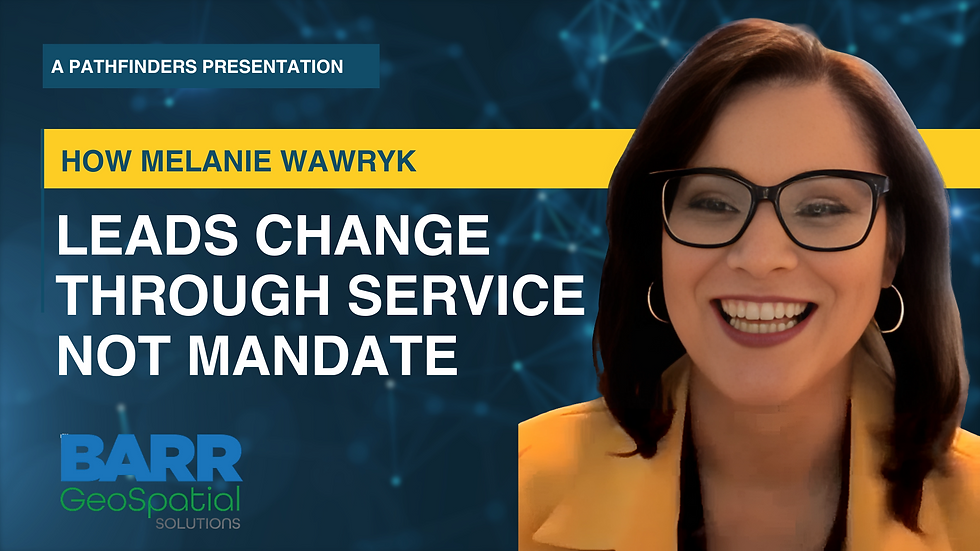Dianne Haley: A Lifelong Mission to Map What Matters
- Jeff Lamb

- Apr 1, 2022
- 2 min read
Updated: Aug 29
In 1975, Dianne Haley printed her first computer-generated map using Xs and Os. It was primitive, she admits, but something clicked. That clunky map was the beginning of a 40-year journey into the geospatial industry—one that would transform how cities operate, how governments make decisions, and how communities stay safe.
From her early days as a developer at the City of Calgary to her leadership role at Alberta’s Energy Regulator, Dianne didn’t just witness the evolution of GIS—Geographic Information Systems—she helped lead it. But she’s quick to remind us that GIS is more than tech.
“It’s a way of displaying an immense amount of information in a visual format that makes it easy to understand,” she explained. “Rather than looking at a table of numbers, it's like a picture that’s worth a thousand words.”
As a leader, Dianne found her calling in using GIS to solve problems across departments: mapping mosquito ponds to prevent outbreaks, tracking Calgary’s tree canopy, and even helping police helicopters respond more efficiently. “It brought me a whole lot of joy to help those business units meet their goals,” she said. “To see them get really excited about what this technology could do for them—that was energizing.”
Yet, pushing GIS forward wasn’t always smooth. Technology came and went. Solutions became obsolete. Dianne often had to rebuild from scratch—twice having to migrate entire systems after vendors became insolvent.
“But the data persists,” she said. “Technology comes and goes. You just have to massage it to fit the new solution.”
That resilience defined her path. So did her ability to spot—or create—champions within an organization. “Sometimes you have to build them,” she said with a smile. She organized GIS Day events and invited internal users to showcase their success stories. “They’d get excited presenting their work, and that excitement made them natural advocates.”
Dianne also knew that championing GIS meant marketing it—something not typically taught in technical roles. “I always told my team, I’m not the only one doing the marketing. We all have to show people what this technology can do. You can't just tell them—you have to show them.”
But it wasn’t just about cheerleading. There were hard conversations and bureaucratic hurdles. “The brick walls weren’t about the tech—they were about personalities, politics, and communication breakdowns,” she said. Whether it was pushing for metadata standards or negotiating internal governance models, Dianne leaned on patience, listening, and diplomacy.
Over the years, she saw GIS grow from niche to necessary. By the time she retired, nearly every department in her organizations relied on it. And although she’s stepped away from full-time work, she continues to give back through the URISA GIS Leadership Academy—a program she helped design to train the next generation of leaders, not just in tools, but in strategy, communication, and ethics.
“I realized early on I couldn’t do it all alone,” she reflected. “You need your team, your partners, and the people who believe in what you’re building. Collaboration is everything.”
Dianne Haley’s legacy isn’t just in the maps she helped create. It’s in the people she empowered, the systems she improved, and the belief she sparked in what’s possible when we visualize data to serve people.







Comments